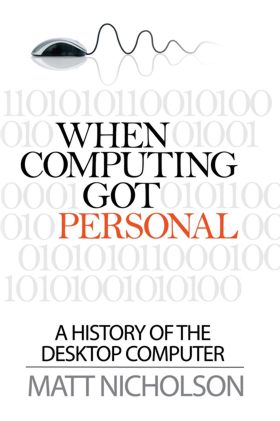| When Computing Got Personal |
|
Author: Matt Nicholson It’s easy to forget how recently computers were something only found in large companies and government departments. When Computing got Personal is an account of the journey from 1970 when there were no personal computers, to today when computers are everywhere. Matt Nicholson is in a good position to write this book. He began editing What Micro in 1983, and has been active writing analysis of the industry ever since. The book starts from the 1970s with mainframes and minis, and the development of the microprocessor. This is essentially scene setting for the main story, which starts with ‘the rise of the nerds’, looking at the very early days of Silicon Valley.
One interesting thing Nicholson pulls out in the first chapter is the divide between Microsoft in the form of Bill Gates and Paul Allen, and what was essentially an open-source alternative. Microsoft’s view was that software took a lot of work and should be paid for, whereas many other pioneers were essentially putting forward the open source arguments. The book continues through the era of the Apple II, Commodore Pet, and Sinclair ZX80, 81 and Spectrum. The story of the IBM PC, followed by the many PC clones, makes interesting reading, even for those of us who lived through that era. There’s a good description of Xerox PARC and the development of the GUI, followed by the rise of Apple with the Lisa onwards, and the ‘battle of the WIMPS’ between Windows, GEM, and the Apple Mac.
The book finishes with a look at open source and Linux, and the post-PC devices such as tablets. There’s also a nice timeline, and a brief description of how computers work. I enjoyed this book; it has obviously been extremely well researched, and is well written and takes a coherent route through the history. Two things would have increased my enjoyment, though; firstly some illustrations – there are none in the book. Secondly, more in the way of personal views. Nicholson has been scrupulously even handed and objective in his narrative, but given his long experience in the industry, I’m sure he must have strongly held opinions on who were the good guys and who less so, and I’d have liked to hear them. Despite these drawbacks, the book is still a great trip down memory lane, and it’s interesting to see the history laid out in such a clear way.
|
|||
| Last Updated ( Friday, 04 April 2014 ) |

